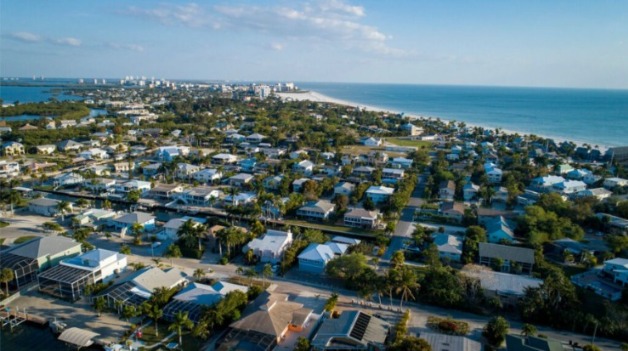
Hurricanes can wreak havoc on your commercial roof, leaving behind both obvious and hidden damage. While you may easily spot watermarks, mold, or structural issues, some signs of storm damage are less apparent to the untrained eye. Conducting a thorough inspection is essential to prevent further problems, safeguard your building, and plan for necessary repairs.
Let’s explore how to inspect your roof after a hurricane and uncover damage that might otherwise go unnoticed.
1. Start with a Preliminary Inspection
Once the storm has passed and it’s safe to assess the damage, begin with a preliminary inspection to get an overall sense of the condition of your roof.
Here’s what to do:
Clear Away Debris: Safely remove branches, leaves, and other debris from the roof. Leaving debris for too long can worsen any underlying damage.
Call Professional Roofing Experts: A professional roofing contractor has the tools and expertise to identify hidden damage that might not be obvious.
Check for Water Damage Indoors: Monitor ceilings, walls, and floors inside your building for water stains or leaks. These can indicate roof damage that requires immediate attention.
Schedule Regular Maintenance: Damage from hurricanes often develops over time. Setting up a consistent maintenance plan helps prevent issues like mold or structural failure from escalating.
2. Look for Subtle Signs of Roof Damage
Hurricane damage isn’t always easy to spot. While you may notice clear issues like leaks or missing shingles, here are some lesser-known signs that could point to serious problems:
Bubbles and Blisters
Trapped moisture or air under your roof’s layers can create bubbles or blisters. These may not always be visible to the naked eye. Left unchecked, the trapped moisture can travel across your roof, causing widespread damage. A professional inspection can help identify these hidden vulnerabilities.
Ponding Water
If water remains pooled on your roof for more than 48 hours, it’s a sign of poor drainage or underlying structural issues. Ponding adds immense weight to your roof, which can worsen any pre-existing problems. Promptly addressing ponding water can prevent costly repairs in the future.
Water Leaks
Water stains inside your building might seem easy to pinpoint, but locating the source of the leak is often tricky. On flat or low-sloped roofs, water can travel a long way before appearing as an interior leak. TPO roofers and commercial roofing experts have specialised equipment to track down these hidden leaks and resolve them effectively.
Mold Growth
Mold and mildew are signs of prolonged moisture exposure, often caused by undetected leaks. Unfortunately, visible mold is just the tip of the iceberg—infestations often begin weeks before they become noticeable. This highlights the importance of acting quickly and having your roof inspected by professionals to prevent health hazards and further structural damage.
3. The Importance of Professional Inspections
While some damage might be visible, there are hidden risks that only experienced professionals can uncover. These include weak spots, deteriorated materials, or structural failures that could compromise the safety of your roof.
Whether you’re dealing with a tile roof, metal roofing, or a TPO membrane, it’s essential to work with skilled roofing contractors in Bradenton, FL, or nearby areas. Professional inspections ensure you catch all issues early and avoid expensive repairs down the line.
Comprehensive Roof Inspection Checklist for Hurricane Damage
Conducting a thorough roof inspection after a hurricane is essential to identify potential damage and prevent further issues. Start by examining the roof from the ground, scanning for missing, cracked, or torn roofing materials. Pay extra attention to vulnerable areas like edges and ridgelines, as they are most susceptible to high winds.
Check for loose or exposed nails, which can allow water to penetrate and cause additional damage. Inspect the sealant and flashing around vents, chimneys, and skylights, as these are common points for leaks. Additionally, assess the gutter system to ensure it is securely attached, free of debris, and functioning properly to prevent water buildup that could harm the roofing structure.
If your home in Tampa, FL, features specific materials like tile or metal roofs, examine them closely for issues such as chips, dents, displaced tiles, or warped panels. Different materials present unique vulnerabilities: tile roofs may crack, while metal roofs can experience loose fasteners or bending.
By using this detailed checklist, homeowners can pinpoint problems early and avoid costly post-hurricane repairs. If you're uncertain about the extent of the damage or how to perform a safe inspection, it’s wise to seek help from a professional roofing contractor experienced in hurricane-related roof damage.
Planning Repairs for Hurricane-Damaged Roofs
After completing a roof inspection and assessing the damage, it’s time to determine whether temporary fixes or permanent repairs are necessary. Temporary solutions, such as using tarps or sealants to cover leaks, are quick and cost-effective ways to prevent further interior or structural damage immediately after a hurricane.
For more severe damage, however, long-term repairs or even full roof replacement may be required, particularly if the structure is compromised. Although these solutions involve higher costs and more extensive work, they provide greater durability and better protection against future storms.
It’s essential to budget for both temporary fixes and potential major repairs, as costs can vary depending on the extent of the damage. Planning ahead and understanding your options will help homeowners effectively navigate the repair process, ensuring their roofs are strong, secure, and storm-resistant for years to come.
Conclusion
Inspecting your commercial roof after a hurricane requires attention to detail and a proactive approach. From clearing debris to recognising subtle signs like bubbles or ponding, every step matters in protecting your property. However, some damage isn’t always obvious, making professional inspections crucial.
At AKVM Roofing Company, we specialise in commercial roof repair, leak detection, and maintenance services. Our experienced team of roofing contractors in Sarasota and surrounding areas is here to ensure your roof remains safe and secure, no matter the damage caused by the storm.

 SURVEY
How Did You Hear About Us?
SURVEY
How Did You Hear About Us?





























Comments